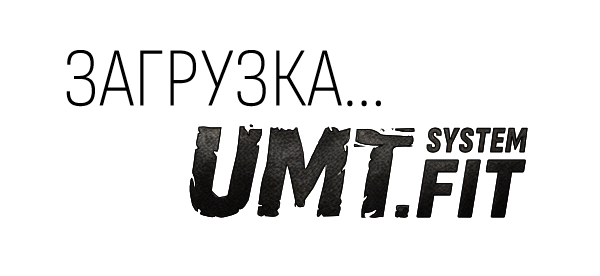
ЭТОТ САЙТ ПОКА В РАЗРАБОТКЕ
ПОКАЗАТЬ БЕТА-ВЕРСИЮ
ПОКАЗАТЬ БЕТА-ВЕРСИЮ




ВОЙТИ
 ЛУЧШАЯ ТРЕНИРОВОЧНАЯ
ЛУЧШАЯ ТРЕНИРОВОЧНАЯСИСТЕМА ДЛЯ ЛЮДЕЙ
А НЕ СПОРТСМЕНОВ
Представьте себе фитнес-путешествие, которое является не просто тренировкой,
а захватывающей ролевой игрой, где Вы - главный герой, который проходит уровни
и побеждает монстров, получает награды и развивает своего аватара, выбирая его
навыки и умения, а самое главное вместе с этим свои физические возможности.
Добро пожаловать в мир фитнес
системы UMT - новаторского подхода,
который превращает физические
упражнения в эпическое приключение
по cамосовершенствованию.
системы UMT - новаторского подхода,
который превращает физические
упражнения в эпическое приключение
по cамосовершенствованию.
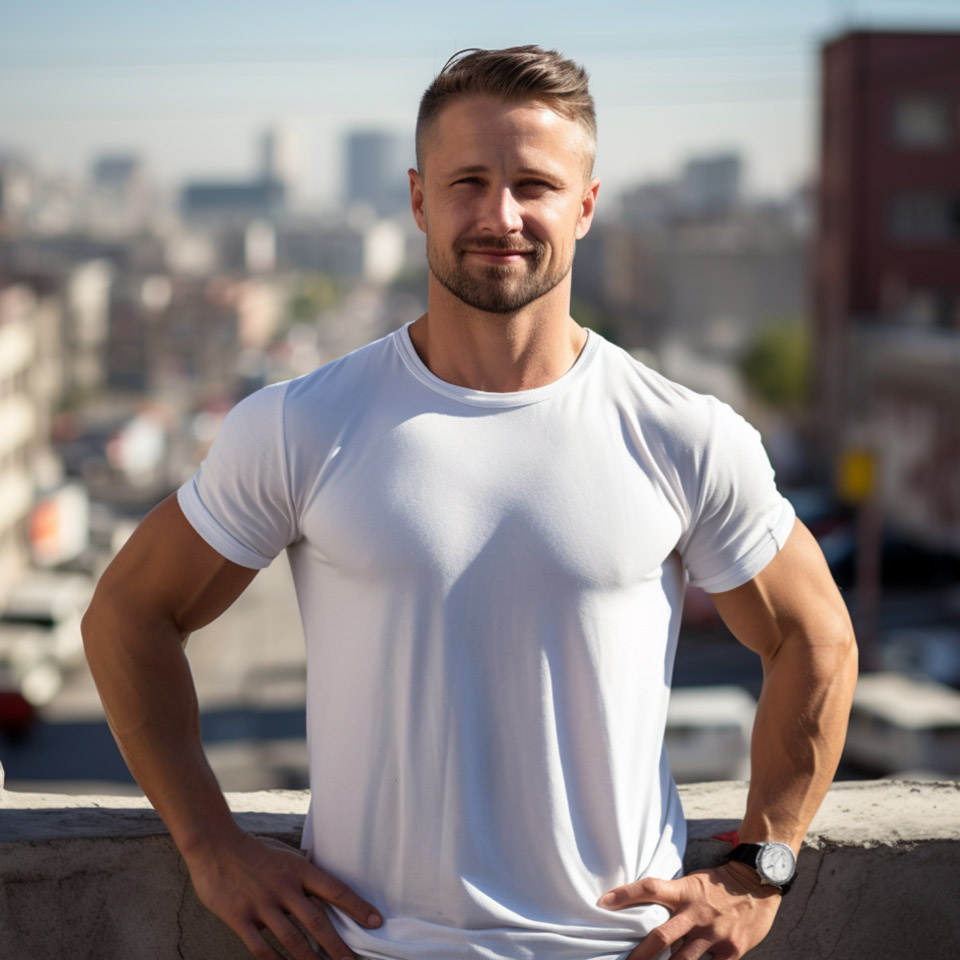


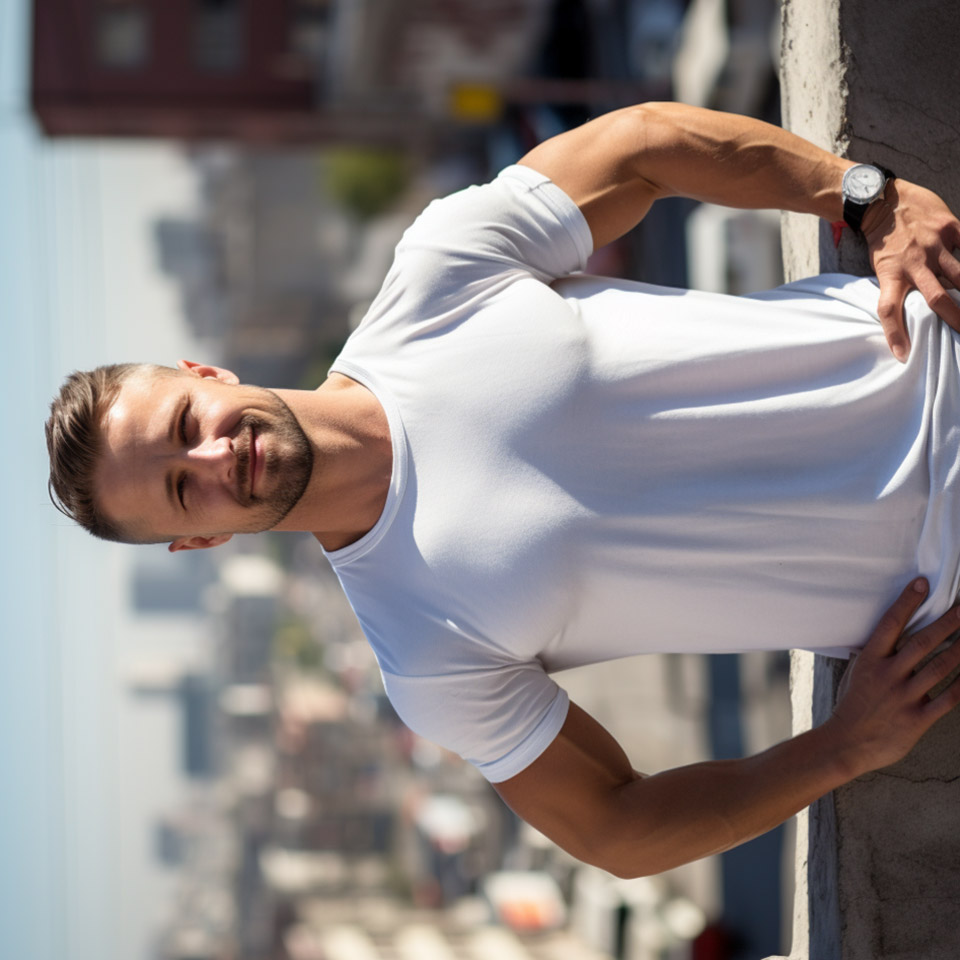
ВОЗДЕЙСТВИЕ СИСТЕМЫ UMT
НА МЫШЦЫ ЯВЛЯЕТСЯ
ПРЕОБРАЗУЮЩИМ!
НА МЫШЦЫ ЯВЛЯЕТСЯ
ПРЕОБРАЗУЮЩИМ!
Короткие и интенсивные упражнения требуют максимального сокращения мышц.
Всего ТРИ упражнения за тренировку!
в 5-20 подходах и последующими оптимальными
интервалами отдыха дают организму необходимый стимул для адаптации
структуры мышечных волокон, что в дальнейшем приводит к оптимальному
росту мышц, без избыточной травматики
и требованиям к восстановлению...
А самое главное происходит глубокое
воздействие на митохондрии
(клеточные энергетические центры,
отвечающие за выработку энергии)
воздействие на митохондрии
(клеточные энергетические центры,
отвечающие за выработку энергии)
Рекомендуемый темп занятия обеспечивает оптимальное дыхание организма
во второй пульсовой зоне на протяжении всей тренировки для наилучшего насыщения
кислородом мышц и других клеток организма, что стимулирует образование новых митохондрий и их сетей.
Увеличение количества митохондрий
значительно повышает выносливость
и энергетический потенциал организма,
сохраняет здоровье и молодость вашего тела
Именно в митохондриях
сгорает лишний жир организма
сгорает лишний жир организма





UMT тренировка это:


ОДНОВРЕМЕННО
И СИЛОВАЯ, И КАРДИО
ТРЕНИРОВКА
И СИЛОВАЯ, И КАРДИО
ТРЕНИРОВКА
СЖИГАНИЕ ЖИРА И НАБОР
МЫШЕЧНОЙ МАССЫ
МЫШЕЧНОЙ МАССЫ
КАК ЭТО ВОЗМОЖНО?




Причём это кардио для всех зон тела, а не только для нижней части тела,
как в классических кардио нагрузках, например беге.
Как проходят тренировки UMT?
На каждой тренировке выполняются только ТРИ упражнения,
на ТРИ группы мышц.
ЧЕМ ЭТО ЛУЧШЕ?
привычного

привычного


Каждый подход в упражнении длиться ровно 10 сек
и за это время нужно успеть выполнить 8-10 повторений, при максимуме усилий.
Это один подход.
ЧЕМ ЭТО ЛУЧШЕ?
привычного

привычного


Между подходами отдых от 40 до 90 сек. Тренировка проходит под отсчёт
таймера с аудиокомандами и подсказками.
ПОЧЕМУ ТАК?
устроено

устроено


Количество подходов каждого упражнения от
5 до 20 в зависимости от вашей физической кондиции и уровня в системе.
ПОЧЕМУ ТАК?
задумано

задумано


Весь тренировочный процесс представлен в виде
ролевой игры, где вы развиваете себя, вместе с персонажем этой игры.
ПОДРОБНЕЕ
об игре

об игре


Эта система тренировок направлена на эффективный прогресс обычных людей,
а не предназначена для спортсменов.
В то время как спортсмены ставят перед собой уникальные задачи, UMT ориентирована на потребности обычных людей, стремящихся практическими способами улучшить свою физическую форму и здоровье.
Она учитывает различные стили жизни, уровни физической подготовки и обязательства, которые имеют обычные люди в повседневной жизни.
Предлагая адаптируемые тренировки, управляемые цели и поддерживающую среду, эта система дает возможность обычным людям начать фитнес-путешествие, которое соответствует их жизни, получить устойчивую физическую форму, повысить энергетику и улучшить здоровье.
UMT позволяет обычным людям достичь необычайных успехов в физическом и психическом состоянии.
В то время как спортсмены ставят перед собой уникальные задачи, UMT ориентирована на потребности обычных людей, стремящихся практическими способами улучшить свою физическую форму и здоровье.
Она учитывает различные стили жизни, уровни физической подготовки и обязательства, которые имеют обычные люди в повседневной жизни.
Предлагая адаптируемые тренировки, управляемые цели и поддерживающую среду, эта система дает возможность обычным людям начать фитнес-путешествие, которое соответствует их жизни, получить устойчивую физическую форму, повысить энергетику и улучшить здоровье.
UMT позволяет обычным людям достичь необычайных успехов в физическом и психическом состоянии.
СКОЛЬКО ЭТО СТОИТ?
Система UMT является
БЕСПЛАТНОЙ
во всех её механиках,
как в формировании тренировок,
упражнений и рекомендаций,
так и в игровой составляющей.
БЕСПЛАТНОЙ
во всех её механиках,
как в формировании тренировок,
упражнений и рекомендаций,
так и в игровой составляющей.
Платными и необязательными к покупке являются элементы социальной и развлекательной составляющей системы,
которые не могут повлиять на ваш прогресс.





Чем UMT лучше других программ?
 Аудиогид, таймер
Аудиогид, таймери выверенные рекомендации
 С момента регистрации в системе вам будет предложена базовая программа тренировок, ориентированная на всё тело.
Вы сможете настроить расписание под свои нужды и получать рекомендации по оптимальному количеству
тренировок в неделю или даже в день.
С момента регистрации в системе вам будет предложена базовая программа тренировок, ориентированная на всё тело.
Вы сможете настроить расписание под свои нужды и получать рекомендации по оптимальному количеству
тренировок в неделю или даже в день.Во время занятий вы будете слушать аудиогида, который будет отсчитывать время отдыха, нагрузки, технических перерывов и давать советы по выполнению упражнений и общим действиям на тренировке.
По мере вашего прогресса вы сможете более гибко настраивать свои тренировки, выбирая акценты и дополнительные тренировочные механики, которые помогут достичь нужных вам результатов.
 Ролевой игровой процесс,
Ролевой игровой процесс,перенесённый в реальность
 Ваш тренировочный процесс будет связан с ролевой игрой на экране смартфона.
Выполняя тренировочные задания, вы будете развивать себя и своего аватара,
добывая для него различное снаряжение, которое позволит уже вам лично проводить
тренировки более интересно и разнообразно. Например, вы сможете добыть речевые
подсказки которые будут произноситься во время выполнения упражнения.
Или получить разные голоса помощников, предметы для коррекции тренировочного
процесса и даже возможность получить реальные товары за игровую валюту.
Ваш тренировочный процесс будет связан с ролевой игрой на экране смартфона.
Выполняя тренировочные задания, вы будете развивать себя и своего аватара,
добывая для него различное снаряжение, которое позволит уже вам лично проводить
тренировки более интересно и разнообразно. Например, вы сможете добыть речевые
подсказки которые будут произноситься во время выполнения упражнения.
Или получить разные голоса помощников, предметы для коррекции тренировочного
процесса и даже возможность получить реальные товары за игровую валюту. В рамках игрового процесса вам будет предложено столкнуться со вашими внутренними
монстрами и победить свои слабости и пороки! Например, ЛЕНЬ или АППАТИЮ.
В рамках игрового процесса вам будет предложено столкнуться со вашими внутренними
монстрами и победить свои слабости и пороки! Например, ЛЕНЬ или АППАТИЮ.
 Мотивация и команды друзей
Мотивация и команды друзей
Помимо индивидуальных игровых вызовов, привязанных к тренировочному процессу и прогрессу,
таких как победить один из пороков или получить то или иное достижение,
найти редкий или уникальный предмет. У вас будет возможность создавать команды
среди друзей или семьи, и тогда вы сможете браться за более сложные групповые вызовы,
где победа будет возможна только при активном содействии всех участников команды.

 Вы точно вовлекаете максимум
Вы точно вовлекаете максимуммышечных волокон
для наилучшего прогресса
Высокая интенсивность – 10 повторений
за 10 сек при максимуме усилий – гарантирует вовлечение
всех мышечных волокон в работающих мышцах, а большое количество подходов
(до 15-20 на высоких уровнях) обеспечивает нужное время нахождения под нагрузкой,
для того чтобы мышцы и митохондрии ответили ростом.
 АВТОМАТИЗАЦИЯ ПРОГРЕССА
АВТОМАТИЗАЦИЯ ПРОГРЕССА
Следуя установке 10 повторений
за 10 сек, при максимуме усилий,
ваше тело будет постоянно автоматически подстраивается под свою текущую кондицию.
Таким образом происходит постоянная автоматическая адаптация и прогрессия нагрузок.
Вот вы делали 10 приседаний за 10 секунд, со штангой 20 кг, но на одной из тренировок
вы смогли сделать 11 приседаний за 10 секунд, тогда увеличиваем вес штанги,
например, на 5 кг, и вот вы опять делаете 10 приседаний за 10 секунд и прогрессируете дальше,
т.к. теперь адаптируетесь к штанге 25кг, потом 30кг, потом 50, 60... При этом растёт и сила, на один раз вы сможете присесть со штангой в два-три раза тяжелее рабочей.
 UMT — это на всю жизнь
UMT — это на всю жизнь
Логика системы UMT не в том,
чтобы подкачаться к лету (хоть и не без этого). Это путь длинною в жизнь.
Ваш прогресс будет постоянным и неуклонным. В какой-то момент вы достигнете
идеального состояния, но вам уже будет этого мало, и вы встанете на путь персонального
совершенства, постояно открывая грани возможного своего тела и здоровья.
А протокол UMT всё так же адаптивен и автоматизирован, и вы становитесь всё совершеннее и совершеннее, и ограничить вас сможет только биологический процесс конечности жизни.
А протокол UMT всё так же адаптивен и автоматизирован, и вы становитесь всё совершеннее и совершеннее, и ограничить вас сможет только биологический процесс конечности жизни.
Ваш прогресс нагляден и понятен.
Вы знаете, как далеко продвинулись,
и сколько ещё предстоит сделать.
1-2 уровень — вы новичок.
3-4 уровень — вы на полпути к идеалу.
5-6 — вы в отличной физической форме.
7 уровень — вы начали путь за пределы
идеала, стремясь к совершенству.
Вы знаете, как далеко продвинулись,
и сколько ещё предстоит сделать.
1-2 уровень — вы новичок.
3-4 уровень — вы на полпути к идеалу.
5-6 — вы в отличной физической форме.
7 уровень — вы начали путь за пределы
идеала, стремясь к совершенству.
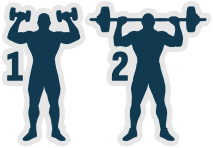 Всего три упражнения за тренировку.
Всего три упражнения за тренировку.Это выполнимо! Это не сложно!
И это реально круто!
Стратегия многократного повторения одинаковых упражнений открывает уникальные
возможности для совершенствования.
Сознательное сосредоточение на одних и тех же движениях позволяет установить непревзойденную связь с ними и по-настоящему понять их нюансы. С каждым раундом вы все глубже погружаетесь в упражнение, постепенно проникаясь его тонкостями и понимая его механику. Это знакомство становится фундаментом, на котором строится безупречное исполнение, а значит безупречные формы вашего тела. Повторение рождает точность, и при постоянном выполнении одних и тех же упражнений мышцы запоминают правильные траектории движения, а сознание оттачивает понимание тонких сигналов для оптимального выполнения.
Это всё резко контрастирует с традиционными программами, в которых упражнения выполняются в 3-6 подходах, после чего происходит опять и опять переход к следующему упражнению, что не дает возможность по-настоящему понять суть каждого упражнения.
В мире, где часто ценится разнообразие, ценность повторения почти утрачена. А ведь именно в повторении мы находим истинное понимание природы вещей.
Сознательное сосредоточение на одних и тех же движениях позволяет установить непревзойденную связь с ними и по-настоящему понять их нюансы. С каждым раундом вы все глубже погружаетесь в упражнение, постепенно проникаясь его тонкостями и понимая его механику. Это знакомство становится фундаментом, на котором строится безупречное исполнение, а значит безупречные формы вашего тела. Повторение рождает точность, и при постоянном выполнении одних и тех же упражнений мышцы запоминают правильные траектории движения, а сознание оттачивает понимание тонких сигналов для оптимального выполнения.
Это всё резко контрастирует с традиционными программами, в которых упражнения выполняются в 3-6 подходах, после чего происходит опять и опять переход к следующему упражнению, что не дает возможность по-настоящему понять суть каждого упражнения.
В мире, где часто ценится разнообразие, ценность повторения почти утрачена. А ведь именно в повторении мы находим истинное понимание природы вещей.

 Психологическая защита от выгорания
Психологическая защита от выгорания
В UMT вы будете выполнять всего ТРИ
упражнения за занятие для ТРЁХ групп мышц.
Это означает, что для каждой группы мышц будет выбрано одно упражнение.
На следующей тренировке, посвященной той же группе мышц, вы можете выбрать другое упражнение,
затем на следующей — третье, и так далее. Таким образом, вы сможете вернуться к первому
упражнению спустя несколько месяцев.
Этот подход обеспечивает разнообразие в ваших тренировках, что помогает предотвратить выгорание и скуку, часто возникающие при однообразных занятиях. Вместо того чтобы зацикливаться на одних и тех же упражнениях, как это неизбежно происходит в других системах. Это не только сделает тренировки более интересными, но и позволит вашему телу адаптироваться к различным нагрузкам, что способствует более эффективному развитию мышечной силы и выносливости. Такой метод также помогает избежать плато в прогрессе, поскольку каждая новая тренировка будет представлять собой вызов для ваших мышц.
Этот подход обеспечивает разнообразие в ваших тренировках, что помогает предотвратить выгорание и скуку, часто возникающие при однообразных занятиях. Вместо того чтобы зацикливаться на одних и тех же упражнениях, как это неизбежно происходит в других системах. Это не только сделает тренировки более интересными, но и позволит вашему телу адаптироваться к различным нагрузкам, что способствует более эффективному развитию мышечной силы и выносливости. Такой метод также помогает избежать плато в прогрессе, поскольку каждая новая тренировка будет представлять собой вызов для ваших мышц.
 Минимальный травматизм
Минимальный травматизм
Вы работаете только с лёгкими или средними весами.
Приблизительно половину от вашего возможного максимума.
И хоть работаете достаточно интенсивно, но всё же в полностью контролируемом движении и в полную амплитуду.
У вас не будет травм суставов, сухожилий или мышц.
 Для прогресса можно
Для прогресса можнообойтись вообще без оборудования
Так как для достижения результата нужна интенсивная работа с лёгкими
или средними весами, зачастую для этого достаточно использовать вес своего
собственного тела. Например, приседания или выпрыгивания - с помощью этих
упражнения вы гарантированно задействуете максимум мышечных волокон ног.
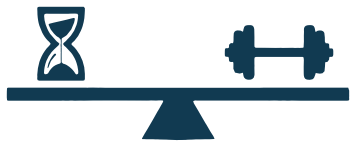 Максимальная эффективность
Максимальная эффективностьпо параметру время/нагрузка
Не нужно делать разминку, так как вы работаете с лёгкими весами -
первые тренировочные подходы и будут разминкой. Если вы занимаетесь
в фитнес зале - не нужно бродить среди тренажеров, ждать очереди
и собирать различные снаряды для тренировки, ведь будет всего 3 упражнения.
Не нужно делать отдельные кардио тренировки.
 Не нужно вести сложные дневники,
Не нужно вести сложные дневники,корректировать и циклировать рабочий вес
Протокол 10 максимально интенсивных повторений за 10 секунд, позволяет
не отслеживать рабочие веса. Просто следуйте ему на каждой тренировке,
подобрав вес на месте и вы будете прогрессировать. Конечно же система
предложит вам зафиксировать ваш текущий рабочий вес для отслеживания
прогресса во времени, но это всего три показателя за тренировку.
 Формирование
Формированиепсихической устойчивости
Делая 100, 250, 500 повторений за тренировку, вы обратите внимание,
что с каждым подходом мозг фиксирует постепенный прогресс - ощутимое напоминание
о вашей целеустремленности. Убедившись в том, что вы способны выстоять и преуспеть
в условиях интенсивных усилий, вы получаете мощный всплеск веры в себя, выходящий
за рамки тренировки и вызывающий позитивное самовосприятие в повседневной жизни.
Сайт использует файлы cookie. Оставаясь на сайте, регистрируясь и используя его,
вы даете согласие на обработку ваших персональных данных, а также соглашаетесь с
Пользовательским соглашением
и нашей Политикой конфиденциальности.
Вы также подтверждаете, что у вас нет противопоказаний для выполнения интенсивных физических нагрузок.

КАК ЭТО
ВОЗМОЖНО?
ВОЗМОЖНО?
ПРОСТЫМИ СЛОВАМИ
сложными
Общая идея:
Интенсивный, но короткий подход
в упражнении — заставляет мышцы испытывать пиковое напряжение, что стимулирует их рост
(в период восстановления после тренировки).
1
Много подходов (до 20) и
короткий отдых между ними —
обеспечивают кардио нагрузку, которая способствует повышению доли окисления жиров
в энергобалансе и создаёт достаточный объём нагрузки для роста мышц и их выносливости
(в период восстановления).
2
Подробнее:
В системе UMT тело делится на две зоны:
ВЕРХ (до пояса), НИЗ (от груди)
А зоны на три мышечные группы:
ПЕРВАЯ, ВТОРАЯ и ТРЕТЬЯ
ВЕРХ (до пояса), НИЗ (от груди)
А зоны на три мышечные группы:
ПЕРВАЯ, ВТОРАЯ и ТРЕТЬЯ
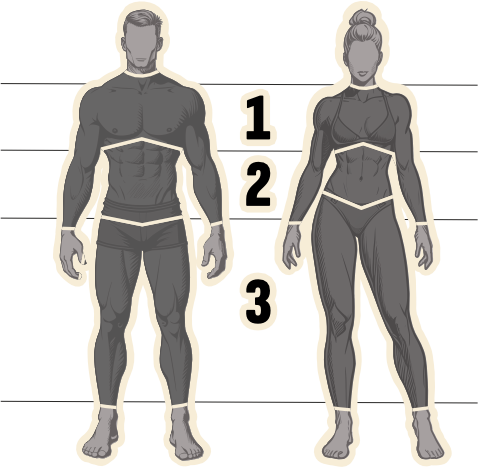
Верхняя зона
включает руки, плечи, грудные мышцы, трапецию, верхнюю и нижнюю часть спины.
Нижняя – ноги, ягодичные и икроножные мышцы, пресс и разгибатели спины.
На каждой тренировке мы тренируем только одну зону (например, верх) и это три группы мышц ПЕРВУЮ, ВТОРУЮ и ТРЕТЬЮ (если зона верх, то это грудные мышцы, широчайшие мышцы спины и разгибатели спины), а для каждой группы используем только одно упражнение по UMT-протоколу.
На каждой тренировке мы тренируем только одну зону (например, верх) и это три группы мышц ПЕРВУЮ, ВТОРУЮ и ТРЕТЬЮ (если зона верх, то это грудные мышцы, широчайшие мышцы спины и разгибатели спины), а для каждой группы используем только одно упражнение по UMT-протоколу.
Подход UMT-протокола предполагает выполнение
10
ПОВТОРЕНИЙ ЗА
10
СЕКУНД
ПРИ МАКСИМУМЕ УСИЛИЙ
ПРИ МАКСИМУМЕ УСИЛИЙ
Это означает, что вам нужно выбрать такое упражнение или такой вес в упражнении,
чтобы вы не успели сделать больше 8-10 повторений за 10 секунд. Если в упражнении вы взяли вес
и к середине тренировки стали делаете 8 повторений за 10 секунд, это приемлемо.
Если вы делаете 7 или 11 повторений, значит, вес нужно либо уменьшить, либо увеличить.
Обычно бывает так: в начале
тренировки вы делаете 10 повторений за подход, а к концу 8, это хороший показатель.
Подход — это 8-10 повторений за 10 секунд, при максимуме усилий — это главное правило системы тренировок UMT. Его соблюдение необходимо для достижения результатов и прогресса в системе.
Всего подходов на тренировке нужно будет сделать от 5 до 20 в зависимости от вашей физической кондиции (вам будет предложено пройти тест) и уровня в системе.
Подход — это 8-10 повторений за 10 секунд, при максимуме усилий — это главное правило системы тренировок UMT. Его соблюдение необходимо для достижения результатов и прогресса в системе.
Всего подходов на тренировке нужно будет сделать от 5 до 20 в зависимости от вашей физической кондиции (вам будет предложено пройти тест) и уровня в системе.
В РЕЗУЛЬТАТЕ РЕГУЛЯРНЫХ
ТРЕНИРОВОК ПОЛУЧАЕМ:
ТРЕНИРОВОК ПОЛУЧАЕМ:
УВЕЛИЧЕНИЕ МЫШЕЧНОЙ МАССЫ
Выполнение 10 повторений за 10 секунд по
UMT-протоколу обеспечивает высокую интенсивность,
что стимулирует рекрутирование быстросокращающихся мышечных волокон,
критически важных для гипертрофии и силовых показателей. А количество
подходов от 5 до 20 обеспечивают их кумулятивную усталость за тренировку, как один
из важных факторов роста мышц и митохондрий.
ЖИРОСЖИГАНИЕ
Так как подходы очень короткие, то и отдых между ними нужен короткий —
идеально 50 сек. А раз время отдыха между подходами короткое, то организм
с начала тренировки поднимает пульс до 60–70% и не снижает его до конца
занятия. Это соответствует кардионагрузке во второй пульсовой зоне, что
приводит к жиросжигающему эффекту как в процессе тренировки (благодаря
аэробной составляющей), как во время тренировки, так и после неё (эффект EPOC).
УВЕЛИЧЕНИЕ ВЫНОСЛИВОСТИ
Непрерывное нахождение во второй пульсовой зоне в процессе активного
отдыха на протяжении всей тренировки активирует митохондриогенез в
задействованных мышцах и в организме в целом. Вследствие роста количества
митохондрий и улучшения функции сердечно-сосудистой системы формируется
прочный фундамент для аэробной выносливости.
ОБШИРНАЯ ВЫНОСЛИВОСТЬ
Так как протокол UMT универсальный для тренировки всех мышечных групп
тела человека, он создает кардионагрузку и митохондриогенез на обычно
не тренируемые в кардиорежиме зоны тела, например на грудные мышцы
или широчайшие мышцы спины, или мышцы рук, плечи, пресс, разгибатели
спины. Это свойство выгодно отличает UMT от других систем тренировок.
УВЕЛИЧЕНИЕ СИЛЫ
Во время выполнения упражнения в темпе одно повторение в секунду
возникает необходимость преодолевать инерцию движения снаряда/тела,
что создает эксцентрическое напряжение, усиливая механическое
воздействие на волокна, создавая необходимые условия роста силы.
ЗАДЕЙСТВОВАНИЕ ВСЕХ ВОЛОКОН
Так как подходы очень короткие, то и отдых между ними нужен короткий —
около минуты, чего достаточно, чтобы почувствовать себя отдохнувшим и
готовым к следующему подходу. Однако этого времени всё-таки не хватит
для полного восстановления потраченной энергии в использованных мышечных
волокнах предыдущего подхода. Поэтому, чтобы выполнить ещё один короткий
подход по UMT-протоколу, организм задействует
новые 1% мышечных волокон, которые не участвовали в предыдущем подходе.
Так вовлекаются всё больше и больше новых мышечных волокон, подход за подходом.
ЗДОРОВЬЕ СЕРДЦА, СУСТАВОВ И СОСУДОВ
Использование умеренных весов снижает пиковую нагрузку на суставы
по сравнению с традиционными силовыми тренировками с большими весами.
Короткая длительность подходов (10 секунд) предотвращает накопление
усталости в суставах, а активный отдых способствует улучшению
кровообращения в окружающих тканях.
Кроме того, отсутствие натуживания при выполнении упражнений минимизирует
резкие скачки артериального давления, что снижает нагрузку на сосудистую
стенку и делает метод безопасным для сердечно-сосудистой системы.
СОВЕРШЕННОЕ ТЕЛО И УСТОЙЧИВАЯ ПСИХИКА
С прогрессом в системе с каждым новым уровнем вам на тренировках будет
предлагаться делать всё больше и больше подходов, что в конечном итоге
в результате адаптации к таким нагрузкам сделает ваше тело совершенным:
сильным, выносливым, мускулистым, здоровым, отзывчивым, а психику
устойчивой и сильной.
ПРОГРЕСС И АДАПТАЦИЯ
На первом уровне вам будет рекомендовано выполнять на тренировках
пока всего по 4-5 подходов на каждую группу мышц. На третьем уровне
— уже по 10-12 подходов. А на седьмом — по 15 или даже 20 подходов
за тренировку. Однако вы самостоятельно сможете скорректировать это
число в любую сторону, ориентируясь на свои ощущения.


Таким образом тренировка UMT это:
ОДНОВРЕМЕННО
И СИЛОВАЯ, И КАРДИО
ТРЕНИРОВКА
И СИЛОВАЯ, И КАРДИО
ТРЕНИРОВКА
СЖИГАНИЕ ЖИРА И НАБОР
МЫШЕЧНОЙ МАССЫ
МЫШЕЧНОЙ МАССЫ
Протокол UMT
(Utilitarian Mitochondrial/Muscle Training) представляет собой интегральный подход,
эффективно сочетающий силовую и аэробную составляющие в рамках одной тренировки.
Короткие мощные подходы (10 секунд) с активным отдыхом (40-90 секунд) обеспечивают:
● Постепенную активацию всех типов мышечных волокон, в том числе высокопороговых, отвечающих за максимальный рост мышечной массы и силы.
● Увеличение выносливости за счёт стимуляции митохондриогенеза и тренировочного во времени нахождения во второй пульсовой зоне.
● Жиросжигающий эффект как в процессе тренировки (благодаря аэробной составляющей), так и после неё (эффект EPOC).
● Минимизацию накопления лактата и сохранение высокой работоспособности на всём протяжении занятия.
● Безопасность: умеренные веса и короткая длительность подходов снижают риск травм суставов и перегрузки сердечно-сосудистой системы.
UMT может быть рекомендован как начинающим, так и опытным атлетам, ищущим новые способы повышения результатов. Методика универсальна и даёт возможность эффективно развивать сразу несколько физических качеств, объединяя преимущества силового и кардионаправленного тренинга.
● Постепенную активацию всех типов мышечных волокон, в том числе высокопороговых, отвечающих за максимальный рост мышечной массы и силы.
● Увеличение выносливости за счёт стимуляции митохондриогенеза и тренировочного во времени нахождения во второй пульсовой зоне.
● Жиросжигающий эффект как в процессе тренировки (благодаря аэробной составляющей), так и после неё (эффект EPOC).
● Минимизацию накопления лактата и сохранение высокой работоспособности на всём протяжении занятия.
● Безопасность: умеренные веса и короткая длительность подходов снижают риск травм суставов и перегрузки сердечно-сосудистой системы.
UMT может быть рекомендован как начинающим, так и опытным атлетам, ищущим новые способы повышения результатов. Методика универсальна и даёт возможность эффективно развивать сразу несколько физических качеств, объединяя преимущества силового и кардионаправленного тренинга.
КАК ЭТО
ВОЗМОЖНО?
ВОЗМОЖНО?
проще
ПОДРОБНОЕ ОПИСАНИЕ
УНИВЕРСАЛЬНЫЙ МЕТОД UMT
(UTILITARIAN MITOCHONDRIAL/MUSCLE TRAINING): синергия силовой и
кардиотренировки для развития мышечной массы, выносливости и жиросжигания,
здоровья сердечно-сосудистой системы и опорно-двигательного аппарата.
Аннотация
В представленной статье описывается и обосновывается протокол тренировок UMT (Utilitarian Mitochondrial/Muscle Training), являющийся разновидностью высокоинтенсивного интервального тренинга (HIIT). Метод ориентирован как на простых людей, так и на спортсменов, и предлагает сочетание мышечной гипертрофии с улучшением аэробных способностей и автоматизированную систему подбора рабочих весов и прогрессии нагрузок. В статье рассматриваются физиологические основы метода, его преимущества и механизмы воздействия на организм. Протокол UMT сочетает силовые и кардионагрузки, обеспечивая одновременный рост мышечной массы, выносливости, снижение жировой прослойки, улучшение состояния сердечно-сосудистой системы и опорно-двигательного аппарата (ОДА).
Метод основан на чередовании высокоинтенсивных коротких подходов (10 секунд) с использованием умеренных отягощений и активного отдыха (60-120 секунд) при сохранении лёгкой аэробной нагрузки во время отдыха. Рассматриваются физиологические механизмы метода, включая рекрутирование высокопороговых двигательных единиц (ВПДЕ), стимуляцию митохондриального роста, окисление жиров и минимизация стресса на сердечно-сосудистую систему и ОДА. Приводятся данные, подтверждающие эффективность UMT для одновременного развития силы, гипертрофии, выносливости и здоровья организма.
1. Введение
Современные подходы к тренировкам всё чаще стремятся к универсальности: объединению силовых нагрузок, кардиотренировок и оздоровительных эффектов в одном протоколе [1][19]. Высокоинтенсивный интервальный тренинг (HIIT) зарекомендовал себя как эффективный метод для развития как аэробной, так и анаэробной производительности [2][15]. HIIT получил широкую популярность в последние годы благодаря своей эффективности в улучшении аэробной выносливости, сжигании жира и увеличении мышечной массы [4][10]. Однако большинство протоколов HIIT ориентированы на спортсменов или требуют сложных расчетов для определения рабочих нагрузок, что делает их менее доступными для широкой аудитории.
Протокол UMT (Utilitarian Mitochondrial/Muscle Training) стремится устранить эти недостатки, предлагая простую и интуитивно понятную систему тренировок. Он сочетает:
а) короткие силовые подходы с умеренными отягощениями,
б) понятное простое правило расчета нагрузки,
в) и активный отдых между подходами,
что позволяет одновременно стимулировать рост мышечной массы и силы, выносливости (развитие плотности митохондрий) [17][22], снижать жировую прослойку [3] и улучшать сердечно-сосудистую систему [19], с одновременной заботой об связках и суставах [18]. Настоящая статья анализирует физиологические механизмы метода UMT, его преимущества и ограничения, а также приводит обоснования заявленных эффектов.
2. Сущность и структура метода UMT
2.1. Короткий интенсивный подход
● Длительность подхода: 10 секунд.За это время выполняется до 10 (±1) повторений с максимальной интенсивностью.
● Снаряд/вес/упражнение выбирается таким образом, чтобы за 10 секунд можно было выполнить не более 8-10 повторений, прилагая максимальное усилие, что полностью израсходует запасы креатинфосфата в задействованных мышцах [8][9].
● Это условие позволяет избежать необходимости вычисления 1ПМ (одноповторного максимума) для определения рабочих весов, что особенно важно для простых людей не спортсменов. Поиск 1ПМ сложная и нетривиальная задача даже для более опытных атлетов [13][14].
2.2. Активный отдых
● Легкая физическая активность (ходьба по залу, махи руками) способствуют выведению образовавшейся молочной кислоты в общий кровоток, разгружая целевую мышечную группу [3][22].
● Продолжительность отдыха 40-90 секунд (настраивается по ощущениям), вкупе с интенсивными подходами призвана поддерживать вторую пульсовую зону (60–70% от максимального ЧСС) [19].
● Продолжительность отдыха позволяет совершить лишь частичное восстановление запасов креатинфосфата в целевой мышечной группе (~50–70%) [8].
2.3. Количество подходов
● Рекомендуется выполнить от 5 до 20 коротких интенсивных подходов в зависимости от кондиции тренирующегося.
● С каждым новым подходом организм рекрутирует все более высокопороговые двигательные единицы для компенсации частично не восстановленных запасов КФ [6][7].
Таким образом, за тренировку обеспечивается полноценная силовая нагрузка на целевую мышечную группу, а также продолжительная (на фоне активного отдыха) аэробная стимуляция [17].
2.4. Автоматизированная прогрессия нагрузки
● Когда в процессе регулярных тренировок тренирующийся начинает выполнять в подходе более 10 повторений за 10 секунд с привычным рабочим весом, это сигнализирует о необходимости увеличения нагрузки (усложнения упражнения, увеличения веса) [13][14].
● Такой метод обеспечивает естественную прогрессию без каких-либо расчетов, без поиска 1ПМ, что само по себе требует отдельного навыка и привлечения сторонних специалистов.
3. Физиологические обоснования
3.1. Использование креатинфосфата и гликолиза
Кратковременные подходы (10 секунд) в предельно интенсивном темпе преимущественно задействуют фосфагенную систему энергообеспечения [8][9]. КФ обеспечивает быстрый ресинтез АТФ, однако его запасы в мышцах ограничены. По истечении 8–10 секунд начинает подключаться анаэробный гликолиз, но из-за короткой длительности подхода значительного накопления лактата не происходит [3] [22]. Это позволяет сохранять работоспособность мышц при дальнейших повторениях, так как отдых в 40-90 секунд и умеренное движение способствуют выведению образовавшейся молочной кислоты в общий кровоток, разгружая целевую мышечную группу [3].
3.2. Постепенное рекрутирование ВПДЕ
Согласно принципу Хеннемана, двигательные единицы (ДЕ) рекрутируются последовательно: от низкопороговых (медленных, выносливых волокон) к высокопороговым (быстрые волокна, обладающие большим потенциалом к росту) [6]. В протоколе UMT первый 10-секундный подход задействует "свежие" запасы КФ, при этом преимущественно активируются доступные (более низкопороговые) ДЕ. В последующих подходах, ввиду частично не восстановившихся запасов КФ, организму приходится задействовать ранее не участвовавшие в движении волокна. Последовательное вовлечение высокопороговых двигательных единиц происходит по мере утомления низкопороговых волокон. Таким образом, постепенно “включаются” все типы волокон, включая высокопороговые, которые в наибольшей степени отвечают за гипертрофию [11].
3.3. Эксцентрическая нагрузка
Во время выполнения упражнения в темпе 1 повторение в секунду возникает преодоление инерции движения снаряда/тела, что создает эксцентрическое напряжение, усиливая механическое влияние на волокна [24].
3.4. Развитие митохондриальной плотности
Во время короткого отдыха тренирующийся должен двигаться (ходьба, махи руками, потягивания), сохраняя целевой пульс в диапазоне 60–70% от ЧСС max. Такая тактика обеспечивает:
1. Рост количества митохондрий: нахождение во второй пульсовой зоне стимулирует сигнальные пути (в частности, через AMPK и PGC-1α) для увеличения плотности митохондрий и улучшения аэробного потенциала во всех типах мышечных волокон [17] [22].
2. Удаление лактата: облегченная активность ускоряет кровоток и позволяет быстрее расщеплять молочную кислоту в печени и других тканях [3]. Это даёт возможность сохранить высокую интенсивность каждого последующего подхода и способствует сохранению митохондрий.
3.5. Жиросжигание
Высокоинтенсивные короткие подходы создают эффект послетренировочного повышенного уровня метаболизма (EPOC), который способствует увеличению общего расхода калорий после тренировки [4] [12]. Поддержание ЧСС во второй зоне дополнительно стимулирует окисление жиров во время самой тренировки [3].
Повышенная аэробная активность между короткими подходами приводит к тому, что организм активно подключает жировые депо в энергетический обмен [3].
3.6. Здоровье сердца, суставов и сосудов
Использование умеренных весов снижает пиковую нагрузку на суставы по сравнению с традиционными силовыми тренировками с большими весами [18]. Короткая длительность подходов (10 секунд) предотвращает накопление усталости в суставах, а активный отдых способствует улучшению кровообращения в окружающих тканях [18].
Кроме того, отсутствие натуживания при выполнении упражнений минимизирует резкие скачки артериального давления, что снижает нагрузку на сосудистую стенку и делает метод безопасным для сердечно-сосудистой системы [19].
L-гипертрофия (увеличение объема левого желудочка) характерна для аэробных нагрузок. UMT, выводящий аэробный компонент через короткий анаэробный, может способствовать данной адаптации сердца, но для подтверждения требуются дополнительные исследования [19].
4. Преимущества метода UMT
4.1. Универсальность
Протокол UMT позволяет одновременно развивать скелетных мышц силу и гипертрофию, локальную и общую выносливость, здоровье сердечно-сосудистой системы и опорно двигательного аппарата в рамках одной тренировки. Данный метод подходит как для профессиональных спортсменов, так и для людей с различным уровнем подготовки благодаря своей универсальности и безопасности.
4.2. Экономия времени
Короткие подходы и минимальные паузы между ними делают тренировки более эффективными по сравнению с традиционными методами, требующими разделения силовых и кардиосессий.
4.3. Безопасность
Умеренные веса и короткая длительность подходов снижают риск травм суставов, связок и перегрузки сердечно-сосудистой системы.
5. Научные подтверждения
5.1. Рост мышечной массы и силы
● Рекрутирование всех типов волокон: за счёт повторных коротких подходов с неполноценным восстановлением по КФ происходит постепенное включение и высокопороговых ДЕ, обладающих наибольшим потенциалом к гипертрофии [6][7].
● Работа в режиме близком к максимальному: 10-секундный траншейный подход позволяет мышцам испытывать пиковое напряжение, что создаёт условия для их последующего роста [11][21].
5.2. Улучшение выносливости
● Увеличение плотности митохондрий: непрерывное нахождение во второй пульсовой зоне в процессе активного отдыха активирует митохондриогенез в задействованных мышцах и в организме в целом [17][21][22].
● Повышение аэробного потенциала: рост количества митохондрий и улучшение функции сердечно-сосудистой системы формирует прочный фундамент для аэробной выносливости [19][22].
5.3. Эффективное жиросжигание
● Ускоренный липолиз во время тренировки: поддержание второй пульсовой зоны в перерывах способствует повышению доли окисления жиров в энергобалансе [3].
● EPOC (избыточное потребление кислорода после нагрузки): короткие интенсивные подходы стимулируют метаболизм и потребление кислорода после тренировки, что усиливает жиросжигающий эффект и в послетренировочный период [4].
5.4. Сокращение накопления молочной кислоты
● Профилактика "забивания" мышц: 10 секунд нагрузки не вызывает массивного выброса лактата, а активный отдых способствует его распределению и утилизации [3][21].
● Поддержка высокой интенсивности: при отсутствии чрезмерного закисления сохраняется производительность мышц в каждом новом подходе [3].
6. Практические рекомендации и коррекция
1. Выбор рабочего веса: подбирается таким образом, чтобы за 10 секунд выполнилось 8–10 повторений при максимальном усилии.
2. Контроль техники: несмотря на высокую интенсивность, необходимо избегать рывков и следить за правильной биомеханикой упражнения. Упражнения выполнять в полную амплитуду.
3. Управление отдыхом: 40-90-секундный отдых желательно проводить в виде медленной ходьбы или легких движений, удерживая пульс на уровне ~60–70% от ЧСС max.
4. Постепенность прогрессии: начинать с 5–7 подходов, увеличивая их количество по мере роста тренированности до 20 подходов.
5. Регулярные изменения: чтобы избежать плато, рекомендуется менять упражнения (например, менять угол наклона, тип хвата и т.д.).
Ошибки, которые могут возникнуть при выполнении метода UMT, обычно связаны с недостаточным отдыхом (меньше 40 секунд) или чрезмерной интенсивностью подходов, когда уже к 5–6-му подходу спортсмен перестает выдерживать форму движения. Важно также учитывать индивидуальные особенности организма и общее состояние здоровья.
7. Заключение
Метод UMT (Utilitarian Mitochondrial/Muscle Training) представляет собой интегральный подход, эффективно сочетающий силовую и аэробную составляющие в рамках одной тренировки. Короткие мощные подходы (10 секунд) с активным отдыхом (40-90 секунд) обеспечивают:
● Постепенную активацию всех типов мышечных волокон, в том числе высокопороговых, отвечающих за максимальный рост мышечной массы и силы.
● Увеличение выносливости за счёт стимуляции митохондриогенеза и тренировочного во времени нахождения во второй пульсовой зоне.
● Жиросжигающий эффект как в процессе тренировки (благодаря аэробной составляющей), так и после неё (эффект EPOC).
● Минимизацию накопления лактата и сохранение высокой работоспособности на всём протяжении занятия.
UMT может быть рекомендован как начинающим так и опытным атлетам, ищущим новые способы повышения результатов. Методика универсальна и даёт возможность эффективно развивать сразу несколько физических качеств, принимая во внимание заботу о здоровье.
Список литературы:
Примечание: Перед началом любых тренировок по протоколу UMT рекомендуется проконсультироваться со специалистом (врачом и/или сертифицированным тренером), особенно при наличии хронических заболеваний или травм. Эргогенические шаблоны (например, применение большого рабочего веса) должны подбираться индивидуально с учётом уровня подготовки.
Аннотация
В представленной статье описывается и обосновывается протокол тренировок UMT (Utilitarian Mitochondrial/Muscle Training), являющийся разновидностью высокоинтенсивного интервального тренинга (HIIT). Метод ориентирован как на простых людей, так и на спортсменов, и предлагает сочетание мышечной гипертрофии с улучшением аэробных способностей и автоматизированную систему подбора рабочих весов и прогрессии нагрузок. В статье рассматриваются физиологические основы метода, его преимущества и механизмы воздействия на организм. Протокол UMT сочетает силовые и кардионагрузки, обеспечивая одновременный рост мышечной массы, выносливости, снижение жировой прослойки, улучшение состояния сердечно-сосудистой системы и опорно-двигательного аппарата (ОДА).
Метод основан на чередовании высокоинтенсивных коротких подходов (10 секунд) с использованием умеренных отягощений и активного отдыха (60-120 секунд) при сохранении лёгкой аэробной нагрузки во время отдыха. Рассматриваются физиологические механизмы метода, включая рекрутирование высокопороговых двигательных единиц (ВПДЕ), стимуляцию митохондриального роста, окисление жиров и минимизация стресса на сердечно-сосудистую систему и ОДА. Приводятся данные, подтверждающие эффективность UMT для одновременного развития силы, гипертрофии, выносливости и здоровья организма.
1. Введение
Современные подходы к тренировкам всё чаще стремятся к универсальности: объединению силовых нагрузок, кардиотренировок и оздоровительных эффектов в одном протоколе [1][19]. Высокоинтенсивный интервальный тренинг (HIIT) зарекомендовал себя как эффективный метод для развития как аэробной, так и анаэробной производительности [2][15]. HIIT получил широкую популярность в последние годы благодаря своей эффективности в улучшении аэробной выносливости, сжигании жира и увеличении мышечной массы [4][10]. Однако большинство протоколов HIIT ориентированы на спортсменов или требуют сложных расчетов для определения рабочих нагрузок, что делает их менее доступными для широкой аудитории.
Протокол UMT (Utilitarian Mitochondrial/Muscle Training) стремится устранить эти недостатки, предлагая простую и интуитивно понятную систему тренировок. Он сочетает:
а) короткие силовые подходы с умеренными отягощениями,
б) понятное простое правило расчета нагрузки,
в) и активный отдых между подходами,
что позволяет одновременно стимулировать рост мышечной массы и силы, выносливости (развитие плотности митохондрий) [17][22], снижать жировую прослойку [3] и улучшать сердечно-сосудистую систему [19], с одновременной заботой об связках и суставах [18]. Настоящая статья анализирует физиологические механизмы метода UMT, его преимущества и ограничения, а также приводит обоснования заявленных эффектов.
2. Сущность и структура метода UMT
2.1. Короткий интенсивный подход
● Длительность подхода: 10 секунд.За это время выполняется до 10 (±1) повторений с максимальной интенсивностью.
● Снаряд/вес/упражнение выбирается таким образом, чтобы за 10 секунд можно было выполнить не более 8-10 повторений, прилагая максимальное усилие, что полностью израсходует запасы креатинфосфата в задействованных мышцах [8][9].
● Это условие позволяет избежать необходимости вычисления 1ПМ (одноповторного максимума) для определения рабочих весов, что особенно важно для простых людей не спортсменов. Поиск 1ПМ сложная и нетривиальная задача даже для более опытных атлетов [13][14].
2.2. Активный отдых
● Легкая физическая активность (ходьба по залу, махи руками) способствуют выведению образовавшейся молочной кислоты в общий кровоток, разгружая целевую мышечную группу [3][22].
● Продолжительность отдыха 40-90 секунд (настраивается по ощущениям), вкупе с интенсивными подходами призвана поддерживать вторую пульсовую зону (60–70% от максимального ЧСС) [19].
● Продолжительность отдыха позволяет совершить лишь частичное восстановление запасов креатинфосфата в целевой мышечной группе (~50–70%) [8].
2.3. Количество подходов
● Рекомендуется выполнить от 5 до 20 коротких интенсивных подходов в зависимости от кондиции тренирующегося.
● С каждым новым подходом организм рекрутирует все более высокопороговые двигательные единицы для компенсации частично не восстановленных запасов КФ [6][7].
Таким образом, за тренировку обеспечивается полноценная силовая нагрузка на целевую мышечную группу, а также продолжительная (на фоне активного отдыха) аэробная стимуляция [17].
2.4. Автоматизированная прогрессия нагрузки
● Когда в процессе регулярных тренировок тренирующийся начинает выполнять в подходе более 10 повторений за 10 секунд с привычным рабочим весом, это сигнализирует о необходимости увеличения нагрузки (усложнения упражнения, увеличения веса) [13][14].
● Такой метод обеспечивает естественную прогрессию без каких-либо расчетов, без поиска 1ПМ, что само по себе требует отдельного навыка и привлечения сторонних специалистов.
3. Физиологические обоснования
3.1. Использование креатинфосфата и гликолиза
Кратковременные подходы (10 секунд) в предельно интенсивном темпе преимущественно задействуют фосфагенную систему энергообеспечения [8][9]. КФ обеспечивает быстрый ресинтез АТФ, однако его запасы в мышцах ограничены. По истечении 8–10 секунд начинает подключаться анаэробный гликолиз, но из-за короткой длительности подхода значительного накопления лактата не происходит [3] [22]. Это позволяет сохранять работоспособность мышц при дальнейших повторениях, так как отдых в 40-90 секунд и умеренное движение способствуют выведению образовавшейся молочной кислоты в общий кровоток, разгружая целевую мышечную группу [3].
3.2. Постепенное рекрутирование ВПДЕ
Согласно принципу Хеннемана, двигательные единицы (ДЕ) рекрутируются последовательно: от низкопороговых (медленных, выносливых волокон) к высокопороговым (быстрые волокна, обладающие большим потенциалом к росту) [6]. В протоколе UMT первый 10-секундный подход задействует "свежие" запасы КФ, при этом преимущественно активируются доступные (более низкопороговые) ДЕ. В последующих подходах, ввиду частично не восстановившихся запасов КФ, организму приходится задействовать ранее не участвовавшие в движении волокна. Последовательное вовлечение высокопороговых двигательных единиц происходит по мере утомления низкопороговых волокон. Таким образом, постепенно “включаются” все типы волокон, включая высокопороговые, которые в наибольшей степени отвечают за гипертрофию [11].
3.3. Эксцентрическая нагрузка
Во время выполнения упражнения в темпе 1 повторение в секунду возникает преодоление инерции движения снаряда/тела, что создает эксцентрическое напряжение, усиливая механическое влияние на волокна [24].
3.4. Развитие митохондриальной плотности
Во время короткого отдыха тренирующийся должен двигаться (ходьба, махи руками, потягивания), сохраняя целевой пульс в диапазоне 60–70% от ЧСС max. Такая тактика обеспечивает:
1. Рост количества митохондрий: нахождение во второй пульсовой зоне стимулирует сигнальные пути (в частности, через AMPK и PGC-1α) для увеличения плотности митохондрий и улучшения аэробного потенциала во всех типах мышечных волокон [17] [22].
2. Удаление лактата: облегченная активность ускоряет кровоток и позволяет быстрее расщеплять молочную кислоту в печени и других тканях [3]. Это даёт возможность сохранить высокую интенсивность каждого последующего подхода и способствует сохранению митохондрий.
3.5. Жиросжигание
Высокоинтенсивные короткие подходы создают эффект послетренировочного повышенного уровня метаболизма (EPOC), который способствует увеличению общего расхода калорий после тренировки [4] [12]. Поддержание ЧСС во второй зоне дополнительно стимулирует окисление жиров во время самой тренировки [3].
Повышенная аэробная активность между короткими подходами приводит к тому, что организм активно подключает жировые депо в энергетический обмен [3].
3.6. Здоровье сердца, суставов и сосудов
Использование умеренных весов снижает пиковую нагрузку на суставы по сравнению с традиционными силовыми тренировками с большими весами [18]. Короткая длительность подходов (10 секунд) предотвращает накопление усталости в суставах, а активный отдых способствует улучшению кровообращения в окружающих тканях [18].
Кроме того, отсутствие натуживания при выполнении упражнений минимизирует резкие скачки артериального давления, что снижает нагрузку на сосудистую стенку и делает метод безопасным для сердечно-сосудистой системы [19].
L-гипертрофия (увеличение объема левого желудочка) характерна для аэробных нагрузок. UMT, выводящий аэробный компонент через короткий анаэробный, может способствовать данной адаптации сердца, но для подтверждения требуются дополнительные исследования [19].
4. Преимущества метода UMT
4.1. Универсальность
Протокол UMT позволяет одновременно развивать скелетных мышц силу и гипертрофию, локальную и общую выносливость, здоровье сердечно-сосудистой системы и опорно двигательного аппарата в рамках одной тренировки. Данный метод подходит как для профессиональных спортсменов, так и для людей с различным уровнем подготовки благодаря своей универсальности и безопасности.
4.2. Экономия времени
Короткие подходы и минимальные паузы между ними делают тренировки более эффективными по сравнению с традиционными методами, требующими разделения силовых и кардиосессий.
4.3. Безопасность
Умеренные веса и короткая длительность подходов снижают риск травм суставов, связок и перегрузки сердечно-сосудистой системы.
5. Научные подтверждения
5.1. Рост мышечной массы и силы
● Рекрутирование всех типов волокон: за счёт повторных коротких подходов с неполноценным восстановлением по КФ происходит постепенное включение и высокопороговых ДЕ, обладающих наибольшим потенциалом к гипертрофии [6][7].
● Работа в режиме близком к максимальному: 10-секундный траншейный подход позволяет мышцам испытывать пиковое напряжение, что создаёт условия для их последующего роста [11][21].
5.2. Улучшение выносливости
● Увеличение плотности митохондрий: непрерывное нахождение во второй пульсовой зоне в процессе активного отдыха активирует митохондриогенез в задействованных мышцах и в организме в целом [17][21][22].
● Повышение аэробного потенциала: рост количества митохондрий и улучшение функции сердечно-сосудистой системы формирует прочный фундамент для аэробной выносливости [19][22].
5.3. Эффективное жиросжигание
● Ускоренный липолиз во время тренировки: поддержание второй пульсовой зоны в перерывах способствует повышению доли окисления жиров в энергобалансе [3].
● EPOC (избыточное потребление кислорода после нагрузки): короткие интенсивные подходы стимулируют метаболизм и потребление кислорода после тренировки, что усиливает жиросжигающий эффект и в послетренировочный период [4].
5.4. Сокращение накопления молочной кислоты
● Профилактика "забивания" мышц: 10 секунд нагрузки не вызывает массивного выброса лактата, а активный отдых способствует его распределению и утилизации [3][21].
● Поддержка высокой интенсивности: при отсутствии чрезмерного закисления сохраняется производительность мышц в каждом новом подходе [3].
6. Практические рекомендации и коррекция
1. Выбор рабочего веса: подбирается таким образом, чтобы за 10 секунд выполнилось 8–10 повторений при максимальном усилии.
2. Контроль техники: несмотря на высокую интенсивность, необходимо избегать рывков и следить за правильной биомеханикой упражнения. Упражнения выполнять в полную амплитуду.
3. Управление отдыхом: 40-90-секундный отдых желательно проводить в виде медленной ходьбы или легких движений, удерживая пульс на уровне ~60–70% от ЧСС max.
4. Постепенность прогрессии: начинать с 5–7 подходов, увеличивая их количество по мере роста тренированности до 20 подходов.
5. Регулярные изменения: чтобы избежать плато, рекомендуется менять упражнения (например, менять угол наклона, тип хвата и т.д.).
Ошибки, которые могут возникнуть при выполнении метода UMT, обычно связаны с недостаточным отдыхом (меньше 40 секунд) или чрезмерной интенсивностью подходов, когда уже к 5–6-му подходу спортсмен перестает выдерживать форму движения. Важно также учитывать индивидуальные особенности организма и общее состояние здоровья.
7. Заключение
Метод UMT (Utilitarian Mitochondrial/Muscle Training) представляет собой интегральный подход, эффективно сочетающий силовую и аэробную составляющие в рамках одной тренировки. Короткие мощные подходы (10 секунд) с активным отдыхом (40-90 секунд) обеспечивают:
● Постепенную активацию всех типов мышечных волокон, в том числе высокопороговых, отвечающих за максимальный рост мышечной массы и силы.
● Увеличение выносливости за счёт стимуляции митохондриогенеза и тренировочного во времени нахождения во второй пульсовой зоне.
● Жиросжигающий эффект как в процессе тренировки (благодаря аэробной составляющей), так и после неё (эффект EPOC).
● Минимизацию накопления лактата и сохранение высокой работоспособности на всём протяжении занятия.
UMT может быть рекомендован как начинающим так и опытным атлетам, ищущим новые способы повышения результатов. Методика универсальна и даёт возможность эффективно развивать сразу несколько физических качеств, принимая во внимание заботу о здоровье.
Список литературы:
1) American College of Sports Medicine. (2017). *ACSM’s Guidelines
for Exercise Testing and Prescription* (10th ed.). Lippincott Williams & Wilkins.
2) Billat, L. V. (2019). *High-Intensity Interval Training: Solutions to the Programming Puzzle*. Routledge.
3) Brooks, G. A. (2018). The science and translation of Lactate Shuttle theory. *Cell Metabolism*, 27(4), 757–785.
4) Gibala, M., McGee, S. L. (2012). Metabolic adaptations to short-term high-intensity interval training: a little pain for a lot of gain? *Exercise and Sport Sciences Reviews*, 39(2), 58–63.
5) Hawley, J. A., Holloszy, J. O. (2009). Exercise: It’s the real thing! *Nutrition Reviews*, 67(3), 172–178.
6) Henneman, E., Somjen, G., Carpenter, D. O. (1965). Functional significance of cell size in spinal motoneurons. *Journal of Neurophysiology*, 28(3), 560–580.
7) Henneman, E. (1974). The size-principle: a deterministic output emerges from a set of probabilistic connections. *Journal of Experimental Biology*, 115, 105–112.
8) MacDougall, J., Sale, D., Moroz, J., Elder, G., Sutton, J., Howald, H. (1979). Mitochondrial volume density in human skeletal muscle following heavy resistance training and interval training programs.
9) Maughan, R., Gleeson, M., Greenhaff, P. L. (1997). *Biochemistry of Exercise and Training*. Oxford University Press.
10) Burgomaster, K. A., Howarth, K. R., Phillips, S. M., Rakobowchuk, M., Macdonald, M. J., McGee, S. L., & Gibala, M. J. (2008). Similar metabolic adaptations during exercise after low volume sprint interval and traditional endurance training in humans. *The Journal of Physiology*, 586(1), 151-160.
11) Schoenfeld, B. J., Ratamess, N. A., Peterson, M. D., Contreras, B., Sonmez, G. T., & Alvar, B. A. (2014). Effects of different volume-equated resistance training loading strategies on muscular adaptations in well-trained men. *The Journal of Strength & Conditioning Research*, 28(10), 2909-2918.
12) Coffey, V. G., & Hawley, J. A. (2007). The molecular bases of training adaptation. *Sports Medicine*, 37(9), 737-763.
13) Haff, G. G., Triplett, N. T. (2015). *Essentials of Strength Training and Conditioning*. Human Kinetics.
14) Zatsiorsky, V., Kraemer, W. J. (2006). *Science and Practice of Strength Training*. Human Kinetics.
15) Buchheit, M., Laursen, P. B. (2013). High-intensity interval training, solutions to the programming puzzle. *Sports Medicine*, 43(5), 313-338.
16) Morton, R. W., et al. (2016). Evidence-based recommendations for natural bodybuilding contest preparation: nutrition and supplementation. *Journal of the International Society of Sports Nutrition*, 13(1), 20.
17) Granata, C., et al. (2018). Exercise-induced mitochondrial biogenesis: a role for the skeletal muscle phospholipidome. *Journal of Physiology*, 596(14), 2665-2678.
18) Van Ginckel, A., et al. (2010). The effects of exercise therapy on cartilage in patients with osteoarthritis of the knee: a systematic review of controlled trials. *Osteoarthritis and Cartilage*, 18(6), 828-838.
19) Garber, C. E., et al. (2011). American College of Sports Medicine position stand. Quantity and quality of exercise for developing and maintaining cardiorespiratory, musculoskeletal, and neuromotor fitness in apparently healthy adults: guidance for prescribing exercise. *Medicine & Science in Sports & Exercise*, 43(7), 1334-1359.
20) Knuttgen, H. G. (2007). Strength training and aerobic exercise: comparison and contrast. *Journal of Strength and Conditioning Research*, 21(3), 973–978.
21) СелуяновВ. Н., СарсанияС. К., СарсанияК. С., СтукаловБ. А. (2006). Минимизация нагрузок гликолитической направленности -суть инновационной технологии физической подготовки футболистов.
22) В.Н. Селуянов, Мякинченко В.Н. (2009). «Развитие локальной мышечной выносливости в циклических видах спорта».
23) Мирзаев ДжавидАзерович (2017). Взаимосвязь тренировок на выносливость и силовых тренировок в их сравнительном анализе.
24) Мирошников А. Б., Форменов А. Д., Смоленский А. В. (2019). Разработка тренировочного протокола при работе на велоэргометре для гипертрофии рабочих мышц.
2) Billat, L. V. (2019). *High-Intensity Interval Training: Solutions to the Programming Puzzle*. Routledge.
3) Brooks, G. A. (2018). The science and translation of Lactate Shuttle theory. *Cell Metabolism*, 27(4), 757–785.
4) Gibala, M., McGee, S. L. (2012). Metabolic adaptations to short-term high-intensity interval training: a little pain for a lot of gain? *Exercise and Sport Sciences Reviews*, 39(2), 58–63.
5) Hawley, J. A., Holloszy, J. O. (2009). Exercise: It’s the real thing! *Nutrition Reviews*, 67(3), 172–178.
6) Henneman, E., Somjen, G., Carpenter, D. O. (1965). Functional significance of cell size in spinal motoneurons. *Journal of Neurophysiology*, 28(3), 560–580.
7) Henneman, E. (1974). The size-principle: a deterministic output emerges from a set of probabilistic connections. *Journal of Experimental Biology*, 115, 105–112.
8) MacDougall, J., Sale, D., Moroz, J., Elder, G., Sutton, J., Howald, H. (1979). Mitochondrial volume density in human skeletal muscle following heavy resistance training and interval training programs.
9) Maughan, R., Gleeson, M., Greenhaff, P. L. (1997). *Biochemistry of Exercise and Training*. Oxford University Press.
10) Burgomaster, K. A., Howarth, K. R., Phillips, S. M., Rakobowchuk, M., Macdonald, M. J., McGee, S. L., & Gibala, M. J. (2008). Similar metabolic adaptations during exercise after low volume sprint interval and traditional endurance training in humans. *The Journal of Physiology*, 586(1), 151-160.
11) Schoenfeld, B. J., Ratamess, N. A., Peterson, M. D., Contreras, B., Sonmez, G. T., & Alvar, B. A. (2014). Effects of different volume-equated resistance training loading strategies on muscular adaptations in well-trained men. *The Journal of Strength & Conditioning Research*, 28(10), 2909-2918.
12) Coffey, V. G., & Hawley, J. A. (2007). The molecular bases of training adaptation. *Sports Medicine*, 37(9), 737-763.
13) Haff, G. G., Triplett, N. T. (2015). *Essentials of Strength Training and Conditioning*. Human Kinetics.
14) Zatsiorsky, V., Kraemer, W. J. (2006). *Science and Practice of Strength Training*. Human Kinetics.
15) Buchheit, M., Laursen, P. B. (2013). High-intensity interval training, solutions to the programming puzzle. *Sports Medicine*, 43(5), 313-338.
16) Morton, R. W., et al. (2016). Evidence-based recommendations for natural bodybuilding contest preparation: nutrition and supplementation. *Journal of the International Society of Sports Nutrition*, 13(1), 20.
17) Granata, C., et al. (2018). Exercise-induced mitochondrial biogenesis: a role for the skeletal muscle phospholipidome. *Journal of Physiology*, 596(14), 2665-2678.
18) Van Ginckel, A., et al. (2010). The effects of exercise therapy on cartilage in patients with osteoarthritis of the knee: a systematic review of controlled trials. *Osteoarthritis and Cartilage*, 18(6), 828-838.
19) Garber, C. E., et al. (2011). American College of Sports Medicine position stand. Quantity and quality of exercise for developing and maintaining cardiorespiratory, musculoskeletal, and neuromotor fitness in apparently healthy adults: guidance for prescribing exercise. *Medicine & Science in Sports & Exercise*, 43(7), 1334-1359.
20) Knuttgen, H. G. (2007). Strength training and aerobic exercise: comparison and contrast. *Journal of Strength and Conditioning Research*, 21(3), 973–978.
21) СелуяновВ. Н., СарсанияС. К., СарсанияК. С., СтукаловБ. А. (2006). Минимизация нагрузок гликолитической направленности -суть инновационной технологии физической подготовки футболистов.
22) В.Н. Селуянов, Мякинченко В.Н. (2009). «Развитие локальной мышечной выносливости в циклических видах спорта».
23) Мирзаев ДжавидАзерович (2017). Взаимосвязь тренировок на выносливость и силовых тренировок в их сравнительном анализе.
24) Мирошников А. Б., Форменов А. Д., Смоленский А. В. (2019). Разработка тренировочного протокола при работе на велоэргометре для гипертрофии рабочих мышц.
Примечание: Перед началом любых тренировок по протоколу UMT рекомендуется проконсультироваться со специалистом (врачом и/или сертифицированным тренером), особенно при наличии хронических заболеваний или травм. Эргогенические шаблоны (например, применение большого рабочего веса) должны подбираться индивидуально с учётом уровня подготовки.
ЧЕМ ЭТО ЛУЧШЕ?
9
ПРИЧИН ПОЧЕМУ ДВА УПРАЖНЕНИЯ ЗА
ТРЕНИРОВКУ ЛУЧШЕ ЧЕМ МНОГО РАЗНЫХ:
ТРЕНИРОВКУ ЛУЧШЕ ЧЕМ МНОГО РАЗНЫХ:
1
ФОКУС НА ТЕХНИКЕ ДЛЯ НОВИЧКОВ
Для новичков важно сосредоточиться на правильной технике выполнения
упражнений. Изучение трёх упражнений за тренировку позволяет лучше усвоить
двигательные паттерны и избежать травм. Исследования показывают, что многократное
повторение одного и того же движения улучшает нейромышечную адаптацию, что особенно
важно на начальном этапе тренировок (Sale, 1988).
2
СНИЖЕНИЕ СТРЕССА
Упрощение тренировочного процесса снижает уровень стресса,
делает тренировки более доступными и менее пугающими.
Вам не нужно постоянно думать о том, что делать дальше,
сколько отдыхать или какие упражнения выполнять. Это
снижает когнитивную нагрузку, позволяя сосредоточиться
на технике выполнения упражнений и качестве работы.
(Ekkekakis, P., &Brand, R., 2019).
Стресс, связанный с чрезмерно сложными или непонятными тренировками
повышает уровень кортизола. Это негативно влияет на восстановление,
рост мышц и общее самочувствие.(Cadegiani, F. A.,
&Kater, C. E. 2019)(Rhodes, R. E., &Kates, A., 2015).
Со временем тренировки UMT.fit становятся одной из форм вашей медитации
3
ИЗБЕГАНИЕ ВЫГОРАНИЯ
Так как на каждой тренировке всего три упражнения для трёх
целевых мышечных групп, то на следующей тренировке для этих
же групп можно выбрать три других упражнения, на следующий —
ещё три других и так далее, и к первым упражнениям вы вернётесь
только через два-три месяца, вы даже успеете соскучиться по ним
и будете рады сделать вновь. Исследования показывают, что
разнообразие в тренировках повышает мотивацию и снижает риск
выгорания (Sylvesteretal., 2011).
4
УГЛУБЛЕНИЕ В ТЕХНИКУ ДЛЯ ОПЫТНЫХ
Для опытных атлетов фокус на трёх упражнениях позволяет лучше
прочувствовать работу мышц и улучшить ментальную связь
"мозг-мышцы" (mind-muscleconnection). , тем более при том,
что в UMT-протокол подразумевает до 20 подходов, а это ~200
повторений за тренировку. Это подтверждается исследованиями,
которые показывают, что концентрация на конкретных мышцах во
время выполнения упражнений увеличивает их активацию
(Snyder&Leech, 2009).
5
ИЗБЕГАНИЕ ПЛАТО
Избегая выгорания и меняя упражнения на каждой тренировке
одной и той же мышечной группы, вы заодно избегаете эффекта
плато, так как мышцы адаптируются к нагрузке
(Fleck&Kraemer, 2014).
5
ИЗБЕГАНИЕ РАЗНООБРАЗИЯ
А может быть, наоборот, вам нравится выполнять одно и то же
упражнение для каждой целевой группы мышц на каждой тренировке.
Пожалуйста, система UMT предоставляет такую возможность, при этом
сохраняя прогресс. Чрезмерное разнообразие упражнений может привести
к накоплению усталости и перегрузке ЦНС
(Schoenfeld, B. J., etal., 2017).
6
ЭКОНОМИЯ ВРЕМЕНИ
Сосредоточение на трёх упражнениях экономит время, так как вам
не нужно переключаться между множеством тренажеров. Это особенно
актуально для тех, у кого ограниченное время на тренировки.
Экономия времени также снижает уровень стресса, что может
положительно сказаться на восстановлении и общем прогрессе.
7
ИНТЕНСИВНОСТЬ И НЕРВНАЯ СИСТЕМА
Выполнение трёх упражнений с большим количеством подходов позволяет
поддерживать высокую интенсивность тренировки, не перегружая нервную систему.
Это связано с тем, что ЦНС адаптируется к конкретному двигательному паттерну,
что снижает общий уровень усталости (Aagaard, P., etal., 2002).
Это особенно важно для естественных атлетов, у которых восстановление
играет ключевую роль (Fry, A. C., &Kraemer, W. J., 1997).
8
ФОКУС НА СЛАБЫХ МЕСТАХ
Если у вас есть отстающие мышечные группы, такой подход позволяет
уделить им больше внимания. Минималистичные программы, включающие
небольшое количество упражнений, но с большим объемом, доказали
свою эффективность для улучшения силы и мышечной массы. Это связано
с тем, что такие программы позволяют лучше фокусироваться на технике
и прогрессии (Ralston, G. W., etal., 2018).
9
ПРОГРЕСС И УВЕРЕННОСТЬ В СЕБЕ
Делая много подходов в одном упражнении вы обратите внимание,
что с каждым подходом мозг фиксирует постепенный прогресс -
ощутимое напоминание о вашей целеустремленности. Убедившись
в том, что вы способны выстоять и преуспеть в условиях интенсивных
усилий, вы получаете мощный всплеск веры в себя, выходящий за рамки
тренировки и вызывающий позитивное самовосприятие в повседневной
жизни (Bandura, 1997).
Список литературы:
Sale, D. G. (1988). Neural adaptation to resistance training. Medicine
& Science in Sports & Exercise, 20(5 Suppl), S135-S145. Исследование
о нейромышечной адаптации и важности повторения движений для новичков.
Ekkekakis, P., & Brand, R. (2019). "Affective Responses to Exercise: Measurement Considerations for Practitioners." FrontiersinPsychology. Эмоциональные реакции на физические упражнения: рекомендации по измерению для практикующих врачей.
Cadegiani, F. A., & Kater, C. E. (2019). "Hormonal aspects of overtraining syndrome: a systematic review." BMC Sports Science, Medicine and Rehabilitation. Гормональные аспекты синдрома перетренированности: систематический обзор.
Rhodes, R. E., & Kates, A. (2015). "Can the Affective Response to Exercise Predict Future Motives and Physical Activity Behavior? A Systematic Review of Published Evidence." Annals of Behavioral Medicine. Может ли эмоциональная реакция на физические упражнения предсказать будущие мотивы и поведение, связанное с физической активностью? Систематический обзор опубликованных данных.
Snyder, B. J., &Leech, J. R. (2009). Voluntary increase in latissimus dorsi muscle activity during the lat pull-down following expert instruction. Journal of Strength and Conditioning Research, 23(8), 2204-2209. Работа, посвященная ментальной связи "мозг-мышцы" и ее влиянию на активацию мышц.
Sylvester, B. D., et al. (2011). Variety support and exercise adherence behavior: Experimental and mediating effects. JournalofBehavioralMedicine, 34(2), 103-113. Исследование о влиянии разнообразия в тренировках на мотивацию и приверженность.
Fleck, S. J., & Kraemer, W. J. (2014). Designing Resistance Training Programs (4th ed.). HumanKinetics. Классическая книга по принципам построения программ силовых тренировок, включая прогрессивную перегрузку и избегание плато.
Bandura, A. (1997). Self-efficacy: The exercise of control. W.H. Freeman and Company. Теория самоэффективности и ее влияние на мотивацию и достижение целей в тренировках.
Schoenfeld, B. J. (2010). The mechanisms of muscle hypertrophy and their application to resistance training. Journal of Strength and Conditioning Research, 24(10), 2857-2872. Обзор механизмов мышечной гипертрофии и их применения в силовых тренировках.
Helms, E. R., et al. (2015). Recommendations for natural bodybuilding contest preparation: Resistance and cardiovascular training. Journal of Sports Medicine and Physical Fitness, 55(3), 164-178. Рекомендации по тренировкам, включая важность восстановления и избегания перетренированности.
Zatsiorsky, V. M., & Kraemer, W. J. (2006). Science and Practice of Strength Training (2nd ed.). Human Kinetics. Книга, которая подробно объясняет научные основы силовых тренировок, включая адаптацию и прогрессию.
Nóbrega, S. R., & Libardi, C. A. (2016). Is resistance training to muscular failure necessary? Frontiers in Physiology, 7, 10. Исследование о важности интенсивности и объема тренировок для достижения прогресса.
Haff, G. G., & Triplett, N. T. (2015). Essentials of Strength Training and Conditioning (4th ed.). Human Kinetics. Комплексное руководство по силовой и кондиционной подготовке, включая принципы периодизации и восстановления.
Kreher, J. B., & Schwartz, J. B. (2012). "Overtraining Syndrome: A Practical Guide." Sports Health. Синдром перетренированности: практическое руководство.
Aagaard, P., etal. (2002). Neural adaptation to resistance training: Changes in evoked V-wave and H-reflex responses. Journal of Applied Physiology, 92(6), 2309-2318. В этом исследовании обсуждается, как ЦНС адаптируется к повторяющимся нагрузкам, что снижает общий стресс от тренировок.
Schoenfeld, B. J., et al. (2017). Dose-response relationship between weekly resistance training volume and increases in muscle mass: A systematic review and meta-analysis. Journal of Sports Sciences, 35(11), 1073-1082. Это исследование показывает, что умеренный объем тренировок (сосредоточенный на небольшом количестве упражнений) может быть более эффективным для гипертрофии, чем чрезмерно разнообразные программы.
Fry, A. C., & Kraemer, W. J. (1997). Resistance exercise overtraining and overreaching: Neuroendocrine responses. Sports Medicine, 23(2), 106-129. В этой работе обсуждается, как чрезмерный объем тренировок может привести к перетренированности, особенно у естественных атлетов.
Ralston, G. W., et al. (2018). The effect of weekly set volume on strength gain: A meta-analysis. SportsMedicine, 48(11), 2587-2601. Метаанализ, показывающий, что увеличение объема тренировок (подходов и повторений) в рамках одного упражнения может быть более эффективным, чем добавление множества разных упражнений.
Albert Bandura (1997) Self-Efficacy: The Exercise of Control is a psychology book written by Albert Bandura in 1997 on self-efficacy, i.e. a person's belief in their own competence. «Самоэффективность: практика контроля» книга по психологии о самоэффективности и вере человека в свою компетентность.
Ekkekakis, P., & Brand, R. (2019). "Affective Responses to Exercise: Measurement Considerations for Practitioners." FrontiersinPsychology. Эмоциональные реакции на физические упражнения: рекомендации по измерению для практикующих врачей.
Cadegiani, F. A., & Kater, C. E. (2019). "Hormonal aspects of overtraining syndrome: a systematic review." BMC Sports Science, Medicine and Rehabilitation. Гормональные аспекты синдрома перетренированности: систематический обзор.
Rhodes, R. E., & Kates, A. (2015). "Can the Affective Response to Exercise Predict Future Motives and Physical Activity Behavior? A Systematic Review of Published Evidence." Annals of Behavioral Medicine. Может ли эмоциональная реакция на физические упражнения предсказать будущие мотивы и поведение, связанное с физической активностью? Систематический обзор опубликованных данных.
Snyder, B. J., &Leech, J. R. (2009). Voluntary increase in latissimus dorsi muscle activity during the lat pull-down following expert instruction. Journal of Strength and Conditioning Research, 23(8), 2204-2209. Работа, посвященная ментальной связи "мозг-мышцы" и ее влиянию на активацию мышц.
Sylvester, B. D., et al. (2011). Variety support and exercise adherence behavior: Experimental and mediating effects. JournalofBehavioralMedicine, 34(2), 103-113. Исследование о влиянии разнообразия в тренировках на мотивацию и приверженность.
Fleck, S. J., & Kraemer, W. J. (2014). Designing Resistance Training Programs (4th ed.). HumanKinetics. Классическая книга по принципам построения программ силовых тренировок, включая прогрессивную перегрузку и избегание плато.
Bandura, A. (1997). Self-efficacy: The exercise of control. W.H. Freeman and Company. Теория самоэффективности и ее влияние на мотивацию и достижение целей в тренировках.
Schoenfeld, B. J. (2010). The mechanisms of muscle hypertrophy and their application to resistance training. Journal of Strength and Conditioning Research, 24(10), 2857-2872. Обзор механизмов мышечной гипертрофии и их применения в силовых тренировках.
Helms, E. R., et al. (2015). Recommendations for natural bodybuilding contest preparation: Resistance and cardiovascular training. Journal of Sports Medicine and Physical Fitness, 55(3), 164-178. Рекомендации по тренировкам, включая важность восстановления и избегания перетренированности.
Zatsiorsky, V. M., & Kraemer, W. J. (2006). Science and Practice of Strength Training (2nd ed.). Human Kinetics. Книга, которая подробно объясняет научные основы силовых тренировок, включая адаптацию и прогрессию.
Nóbrega, S. R., & Libardi, C. A. (2016). Is resistance training to muscular failure necessary? Frontiers in Physiology, 7, 10. Исследование о важности интенсивности и объема тренировок для достижения прогресса.
Haff, G. G., & Triplett, N. T. (2015). Essentials of Strength Training and Conditioning (4th ed.). Human Kinetics. Комплексное руководство по силовой и кондиционной подготовке, включая принципы периодизации и восстановления.
Kreher, J. B., & Schwartz, J. B. (2012). "Overtraining Syndrome: A Practical Guide." Sports Health. Синдром перетренированности: практическое руководство.
Aagaard, P., etal. (2002). Neural adaptation to resistance training: Changes in evoked V-wave and H-reflex responses. Journal of Applied Physiology, 92(6), 2309-2318. В этом исследовании обсуждается, как ЦНС адаптируется к повторяющимся нагрузкам, что снижает общий стресс от тренировок.
Schoenfeld, B. J., et al. (2017). Dose-response relationship between weekly resistance training volume and increases in muscle mass: A systematic review and meta-analysis. Journal of Sports Sciences, 35(11), 1073-1082. Это исследование показывает, что умеренный объем тренировок (сосредоточенный на небольшом количестве упражнений) может быть более эффективным для гипертрофии, чем чрезмерно разнообразные программы.
Fry, A. C., & Kraemer, W. J. (1997). Resistance exercise overtraining and overreaching: Neuroendocrine responses. Sports Medicine, 23(2), 106-129. В этой работе обсуждается, как чрезмерный объем тренировок может привести к перетренированности, особенно у естественных атлетов.
Ralston, G. W., et al. (2018). The effect of weekly set volume on strength gain: A meta-analysis. SportsMedicine, 48(11), 2587-2601. Метаанализ, показывающий, что увеличение объема тренировок (подходов и повторений) в рамках одного упражнения может быть более эффективным, чем добавление множества разных упражнений.
Albert Bandura (1997) Self-Efficacy: The Exercise of Control is a psychology book written by Albert Bandura in 1997 on self-efficacy, i.e. a person's belief in their own competence. «Самоэффективность: практика контроля» книга по психологии о самоэффективности и вере человека в свою компетентность.
ЧЕМ ЭТО ЛУЧШЕ
ПРИВЫЧНОГО?
ПРИВЫЧНОГО?
Текст ещё не готов.
ПОЧЕМУ ТАК?
ОЧЕНЬ ВАЖНО СОБЛЮДАТЬ ОДИНАКОВЫЙ
ИНТЕРВАЛ ОТДЫХА И ВОТ ПОЧЕМУ:
ИНТЕРВАЛ ОТДЫХА И ВОТ ПОЧЕМУ:
1
ОЦЕНКА ПРОГРЕССА
Одинаковые интервалы отдыха помогают точно оценить прогресс.
Если интервалы отдыха варьируются, становится сложно понять,
улучшилась ли ваша физическая форма или вы просто лучше восстановились
за счёт более длительного отдыха. Исследования показывают, что время
отдыха между подходами напрямую влияет на производительность
(Schoenfeld, B. J., etal., 2016).
Соблюдение одинаковых интервалов отдыха позволяет объективно оценить прогресс.
Если на одной тренировке вы сделали 10 повторений с отдыхом 2 минуты,
а на следующей — 12 повторений с тем же интервалом, это явный показатель
улучшения силы или выносливости. В системе UMT
этот прогресс будет наглядно демонстрироваться в вашем развитии от уровня к уровню.






2
ДИСЦИПЛИНА И СОСРЕДОТОЧЕННОСТЬ
Использование таймера помогает поддерживать дисциплину и сосредоточенность
на тренировочном процессе. Это особенно важно в условиях, где легко
отвлечься (например, в зале с другими людьми). Исследования в области
спортивной психологии подчёркивают важность структурированного подхода
к тренировкам. Чёткий план и соблюдение временных интервалов помогают
поддерживать мотивацию и снижают вероятность прокрастинации
(Weinberg, R. S., &Gould, D., 2019).Во время занятий UMT вы будете слушать аудиогида, который будет отсчитывать время отдыха, нагрузки, технических перерывов и давать советы по выполнению упражнений и общим действиям на тренировке.
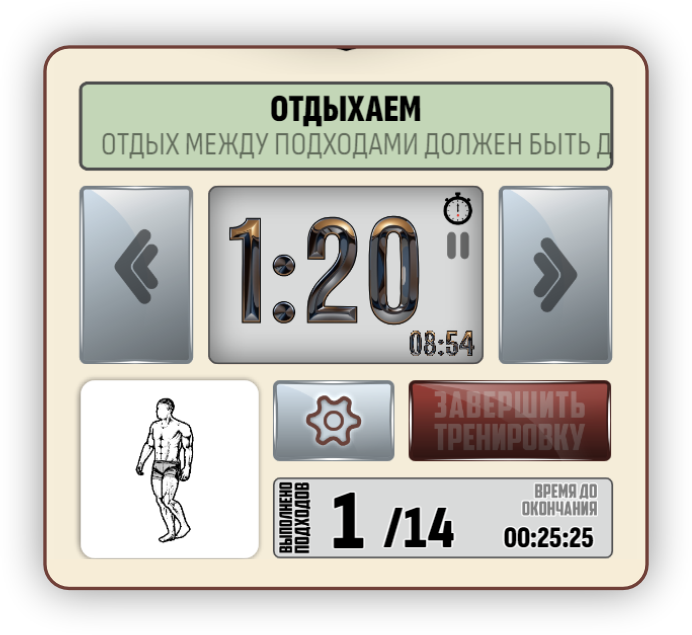
3
ЭКОНОМИЯ ВРЕМЕНИ
Соблюдение интервалов отдыха по таймеру помогает оптимизировать время тренировки.
Без таймера легко растянуть отдых, что приводит к увеличению общей продолжительности
тренировки. Использование таймера позволяет избежать "простоя" и делает тренировку
более интенсивной и продуктивной.Исследования показывают, что структурированные тренировки с чётко определёнными интервалами отдыха более эффективны для достижения целей (например, увеличение силы или выносливости) и при этом занимают меньше времени (deSalles, B. F., etal., 2009).
4
ПСИХОЛОГИЧЕСКИЙ КОМФОРТ
Чёткий план тренировки, включая интервалы отдыха,
снижает уровень стресса и помогает сосредоточиться на тренировке.
Такой план уменьшает «ментальную усталость», позволяя фокусироваться
на технике и интенсивности. Это согласуется с теорией «направленного
внимания», где структура минимизирует отвлекающие факторы
(Mandolesietal., 2018).
Список литературы:
Schoenfeld, B. J., etal. (2016). "Effects of different rest intervals
between sets in resistance training." Journal of Strength and Conditioning
Research. Влияние различных интервалов отдыха между подходами при силовой тренировке.
Weinberg, R. S., & Gould, D. (2019). "Foundations of Sport and Exercise Psychology." Human Kinetics. Основы спорта и психологии физических упражнений.
deSalles, B. F., etal. (2009). "Rest interval between sets in strength training." Sports Medicine. Интервал отдыха между подходами при силовой тренировке.
Mandolesietal. (2018) в Frontiers in Psychology показало, что организованная физическая активность улучшает когнитивные функции, включая концентрацию, за счет оптимизации нейропластичности.
Weinberg, R. S., & Gould, D. (2019). "Foundations of Sport and Exercise Psychology." Human Kinetics. Основы спорта и психологии физических упражнений.
deSalles, B. F., etal. (2009). "Rest interval between sets in strength training." Sports Medicine. Интервал отдыха между подходами при силовой тренировке.
Mandolesietal. (2018) в Frontiers in Psychology показало, что организованная физическая активность улучшает когнитивные функции, включая концентрацию, за счет оптимизации нейропластичности.
ПОЧЕМУ ТАК
ЗАДУМАНО?
ЗАДУМАНО?
Текст ещё не готов.
ПОДРОБНЕЕ
ОБ ИГРЕ
ОБ ИГРЕ
Текст ещё не готов.


